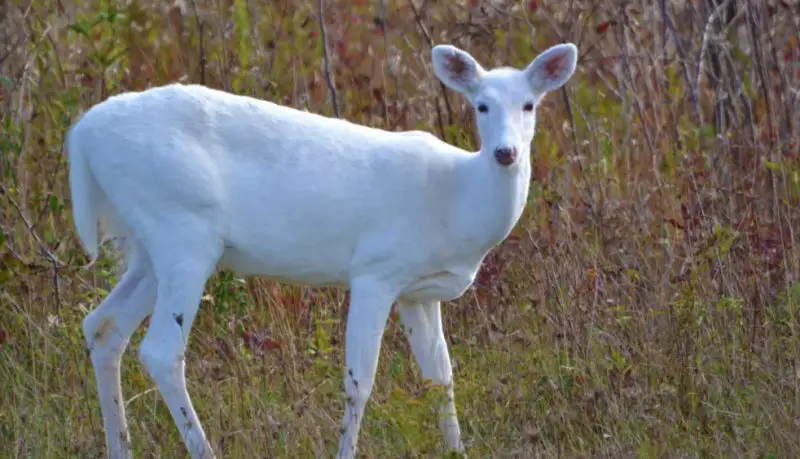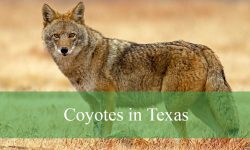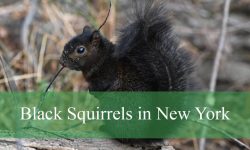White deer have long captured the imagination of nature enthusiasts, photographers, and folklore lovers alike. In Pennsylvania, these ethereal creatures—often mistaken for albinos—hold a mysterious and almost mythical reputation. Yet, behind their striking appearance lies a fascinating story of genetics, history, and survival.
This article explores everything you never knew about white deer in Pennsylvania, from their origins and behavior to the challenges they face today.
What Are White Deer?

White deer are not a separate species but a color variant of the common white-tailed deer (Odocoileus virginianus). Their distinctive appearance comes from rare genetic conditions that affect pigmentation. While all white deer share their glowing white coats, not all of them are true albinos. In fact, there are several variations, each caused by different genetic mechanisms.
White deer have become a symbol of purity, rarity, and even spirituality across cultures. In Pennsylvania, their elusive presence often leaves a lasting impression on those fortunate enough to spot them, particularly in regions like Centre and Lycoming Counties where sightings are relatively common.
The Genetic Mystery Behind White Deer
The genetics of white deer are far more complex than simple “white equals albino.” Scientists have identified two main causes of their white coloration: albinism and leucism.
Albino deer completely lack melanin, resulting in pure white fur, pink noses, and reddish eyes. Their vision is often impaired due to light sensitivity, making survival more challenging in the wild. Leucistic deer, on the other hand, have partial pigment loss, meaning they retain normal eye and nose coloration but display white or patchy coats.
Leucism is generally considered more common and less detrimental than albinism. Because leucistic deer have normal eyesight and health, they are more likely to thrive and reproduce, passing on the rare gene responsible for their coloration.
The History of White Deer in Pennsylvania
Pennsylvania has one of the most famous populations of white deer in the United States, particularly within the former Seneca Army Depot in Romulus, located near the Pennsylvania–New York border. This population began forming during World War II when the U.S. military fenced off thousands of acres of land for munitions storage. With hunting prohibited and natural predators excluded, the deer population flourished—and among them, a few white individuals appeared.
Because these white deer were protected within the fenced area, their unique genetic traits spread through the population over decades. By the 1990s, the depot became home to the largest herd of white deer in the world, estimated at over 200 individuals. Even after the military left, conservation efforts continued to protect these remarkable animals.
Are White Deer Albino or Leucistic?
It’s a common misconception that all white deer are albinos. In Pennsylvania, most white deer are leucistic, meaning they lack pigmentation in their hair but not in their eyes or skin. This distinction is crucial because leucistic deer can see normally and survive much better than their albino counterparts.
Albino deer, with their pinkish eyes and poor vision, are exceptionally rare—estimated to occur in only one out of every 30,000 deer. Leucistic deer, by contrast, may occur in about one in every 1,000, depending on genetic factors and population isolation.
When observed up close, you can tell the difference by the color of the eyes and nose. If they are dark, the deer is leucistic; if pink, it’s albino.
Why Are White Deer So Rare?
The rarity of white deer lies in their genetics and natural selection. Their white coats make them easy targets for predators, reducing their survival rate in the wild. Additionally, hunting pressures and habitat fragmentation have historically reduced populations that carry the white coloration genes.
In enclosed or protected areas like the Seneca Army Depot, however, white deer thrive because they face fewer threats. Over generations, the frequency of the leucistic gene increased, resulting in a stable population of mostly white deer—something that would be nearly impossible in completely wild conditions.
The Cultural and Spiritual Symbolism of White Deer
Throughout history, white deer have been symbols of mystery and spirituality. Native American tribes considered them sacred messengers or omens of transformation. In Celtic mythology, a white stag often appeared as a guide leading hunters toward deeper truths or spiritual awakenings.
In modern Pennsylvania, these beliefs persist. Many locals view the white deer as symbols of purity and renewal, often associating them with good fortune or rare blessings. For wildlife photographers and naturalists, encountering one is a once-in-a-lifetime experience, sparking both awe and reverence.
Where to See White Deer in Pennsylvania
Although white deer can occasionally appear anywhere in Pennsylvania, they are most reliably seen near the former Seneca Army Depot, now known as the Seneca White Deer Park. The park offers guided tours that allow visitors to view the herd safely while learning about their history and conservation.
Sightings have also been reported in Centre County, Lycoming County, and occasionally in northern Pennsylvania regions bordering New York. Because their coloration makes them conspicuous, locals often report sightings quickly, drawing wildlife enthusiasts from all over the state.
The Role of the Seneca Army Depot in Preserving White Deer
The story of the white deer in Pennsylvania is deeply intertwined with the Seneca Army Depot. Built during World War II, this massive facility was enclosed by miles of fencing that unintentionally created a wildlife sanctuary. Without predators or hunters, the deer population exploded. When a few white individuals appeared, their genes spread rapidly through the enclosed group.
For decades, the depot remained one of the safest places for these animals. Even after military operations ceased in the 1990s, conservationists and local organizations worked to preserve both the land and its rare inhabitants. Today, visitors can explore the park and learn about the unique role this accidental sanctuary played in conserving a natural wonder.
How to Identify a White Deer
Identifying a white deer is relatively easy because of their striking appearance. However, distinguishing between a leucistic and albino deer requires a closer look.
- Coat Color: Pure white, though leucistic deer may have small patches of brown or gray.
- Eye Color: Dark or brown in leucistic deer; pink or red in albinos.
- Nose and Hooves: Usually dark in leucistic deer, pinkish in albinos.
- Antlers: Normal in color and structure, typically matching those of regular white-tailed deer.
Despite their delicate appearance, white deer are as strong and agile as their brown counterparts. They can leap over fences, swim across rivers, and adapt to varied habitats.
Behavior and Daily Habits of White Deer
White deer behave just like other white-tailed deer. They are primarily crepuscular, meaning they are most active during dawn and dusk. Their diet consists of grasses, leaves, acorns, and shrubs, and they tend to stay close to forest edges for both feeding and cover.
One interesting behavior noted in the Seneca herd is their tendency to form smaller, tight-knit groups. Because of the unique enclosed environment, white deer there are less fearful of humans, sometimes appearing more curious or tolerant of observation.
In the wild, however, white deer tend to be more cautious due to their visibility. They rely on dense vegetation for camouflage and protection, making forested areas and thickets their preferred habitats.
Mating and Reproduction
White deer follow the same reproductive cycle as typical white-tailed deer. The rutting season peaks in late October through November, and fawns are born in late spring or early summer.
Interestingly, a white deer can give birth to brown fawns, and brown deer can give birth to white ones, depending on the genetic makeup of both parents. The white coloration is recessive, meaning both parents must carry the gene for it to appear in offspring.
Fawns born white are especially vulnerable due to their visibility to predators. However, in protected environments, survival rates are significantly higher, allowing these rare traits to persist.
Challenges White Deer Face in the Wild
While enchanting, white deer face several significant challenges:
- Predation and Visibility – Their bright coats make them easy prey for predators such as coyotes and bobcats.
- Genetic Limitations – Because the white gene is recessive, population bottlenecks can lead to inbreeding and reduced genetic diversity.
- Hunting Pressures – Outside protected zones, white deer are vulnerable to hunters, although some areas enforce special protections.
- Habitat Loss – Urban expansion and deforestation reduce their habitat, making sightings even rarer in the wild.
Despite these obstacles, conservation programs and community awareness are helping ensure that white deer continue to survive and inspire.
Are White Deer Protected by Law in Pennsylvania?
Pennsylvania does not have a statewide law that specifically protects white or albino deer. However, some local regulations or private reserves may prohibit hunting them. Many hunters voluntarily avoid shooting white deer, considering it bad luck or disrespectful due to their rarity and symbolic meaning.
At the Seneca White Deer Park and similar sanctuaries, hunting is strictly forbidden. These efforts have been vital in maintaining stable populations for research, education, and eco-tourism.
White Deer and Folklore in Pennsylvania
In Pennsylvania’s rural communities, white deer are often surrounded by myth and superstition. Some people believe that seeing one brings good luck, while others view it as a sign of major life change. Farmers once considered them protectors of the forest, and Native American legends spoke of them as sacred spirits.
Stories of ghostly white deer appearing on foggy mornings or during twilight hours have been passed down through generations. Whether viewed as mystical beings or biological wonders, they remain deeply ingrained in Pennsylvania’s natural folklore.
Conservation Efforts and Public Awareness
Today, conservation organizations, local residents, and wildlife enthusiasts work together to ensure the survival of white deer populations in Pennsylvania. At Seneca White Deer Park, guided tours educate visitors about the history, genetics, and conservation needs of these unique animals.
Education and ecotourism have become powerful tools for conservation. When people learn about the importance of protecting rare genetic variations like leucism, they are more likely to support habitat protection and responsible wildlife management.
Photography and Observation Tips
If you plan to photograph or observe white deer in Pennsylvania, patience and respect are key. These animals are shy and sensitive to disturbance, especially during fawning season.
- Use binoculars or telephoto lenses to keep a safe distance.
- Visit during dawn or dusk when deer are most active.
- Avoid loud noises, flash photography, or sudden movements.
- Never feed or approach them, as this can disrupt natural behavior.
Many photographers find early winter mornings ideal, when white coats blend beautifully against frost-covered fields or snow.
The Future of White Deer in Pennsylvania
The fate of Pennsylvania’s white deer depends largely on continued conservation and habitat protection. As development encroaches on wild lands, maintaining safe refuges like Seneca White Deer Park becomes even more essential.
Genetic diversity remains a concern, as inbreeding can weaken populations over time. Wildlife biologists are studying ways to introduce new genetic lines while preserving the distinctive white coloration that makes these deer so unique.
If awareness and conservation efforts continue to grow, future generations will still have the chance to witness these breathtaking creatures roaming freely across Pennsylvania’s landscapes.
Fun Facts About White Deer in Pennsylvania
- White deer are not ghosts—they are living, healthy animals with a rare genetic condition.
- The Seneca White Deer herd is believed to be the largest concentration of white deer in the world.
- Native American legends often described the white deer as a spiritual messenger.
- Leucistic deer can have partial coloration—some have white bodies with dark tails or faces.
- Seeing a white deer in Pennsylvania is so rare that some locals consider it a once-in-a-lifetime event.
Final Thoughts
White deer in Pennsylvania are more than just a genetic curiosity—they are living symbols of mystery, resilience, and natural beauty. Their survival is a testament to the power of protection and conservation in an ever-changing world.
Whether you see them as mystical creatures or biological marvels, one thing is certain: white deer embody the wonder of Pennsylvania’s wild heritage. As you wander through the state’s forests and meadows, keep your eyes open—you might just catch a glimpse of one of nature’s most extraordinary secrets.






